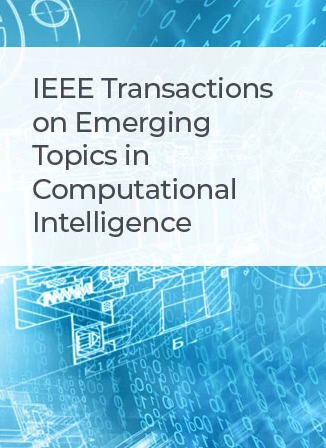Model-Data Jointly Driven Method for Airborne Particulate Matter Monitoring
IF 5.3
3区 计算机科学
Q1 COMPUTER SCIENCE, ARTIFICIAL INTELLIGENCE
IEEE Transactions on Emerging Topics in Computational Intelligence
Pub Date : 2024-12-25
DOI:10.1109/TETCI.2024.3502433
引用次数: 0
Abstract
In this paper we propose a novel model-data jointly driven (MDJD) method from a single picture for airborne particulate matter (APM) monitoring, towards assisting the decision-making for government and reducing the health risks for individuals. The MDJD method is mainly composed of three steps. First, we create a vector of .distance. as the model driven natural scene statistic (NSS) features through comparing the sparsity features that are extracted from one picture in five transform domains with their corresponding benchmark features that are derived by using a huge number of pictures with the extremely low APM concentrations in advance. Second, we produce a vector of .distance. as the data-driven NSS features through comparing the contrast-sensitive features that are chosen from hundreds of deep features with their associated benchmark features that are derived based on the same feature generation method as used in model-driven NSS features. Lastly, we fuse the aforesaid model- and data-driven NSS features by introducing a nonlinear regressor to estimate the APM concentration. Extensive experiments conducted on two large-size APM picture datasets validate the superiority of our proposed MDJD method over the state-of-the-art model-driven methods and data-driven methods by a sizable gain of 7.4% in terms of peak signal to noise ratio. Via a series of ablation studies, we can observe that fusing model- and data-driven NSS features is beneficial to improving the model's generalization and fitting abilities and leads to the gains of over 15.1% compared with using either type of features in isolation.模型-数据联合驱动的大气颗粒物监测方法
本文提出了一种基于单幅图像的模型-数据联合驱动(mddd)的空气颗粒物监测方法,旨在帮助政府决策,降低个人健康风险。mddd方法主要由三个步骤组成。首先,我们创建一个。distance向量。作为模型驱动的自然场景统计(NSS)特征,将从5个变换域中提取的一张图片的稀疏性特征与预先使用大量极低APM浓度的图片得到的相应基准特征进行比较。其次,我们生成一个。distance向量。作为数据驱动的NSS特征,通过将从数百个深度特征中选择的对比度敏感特征与基于模型驱动的NSS特征中使用的相同特征生成方法派生的相关基准特征进行比较。最后,我们通过引入非线性回归器来估计APM浓度,从而融合上述模型和数据驱动的NSS特征。在两个大型APM图像数据集上进行的大量实验验证了我们提出的mddd方法比最先进的模型驱动方法和数据驱动方法的优势,在峰值信噪比方面获得了7.4%的可观增益。通过一系列消融研究,我们可以观察到融合模型和数据驱动的NSS特征有利于提高模型的泛化和拟合能力,与单独使用任何一种特征相比,其增益超过15.1%。
本文章由计算机程序翻译,如有差异,请以英文原文为准。
求助全文
约1分钟内获得全文
求助全文
来源期刊

IEEE Transactions on Emerging Topics in Computational Intelligence
Mathematics-Control and Optimization
CiteScore
10.30
自引率
7.50%
发文量
147
期刊介绍:
The IEEE Transactions on Emerging Topics in Computational Intelligence (TETCI) publishes original articles on emerging aspects of computational intelligence, including theory, applications, and surveys.
TETCI is an electronics only publication. TETCI publishes six issues per year.
Authors are encouraged to submit manuscripts in any emerging topic in computational intelligence, especially nature-inspired computing topics not covered by other IEEE Computational Intelligence Society journals. A few such illustrative examples are glial cell networks, computational neuroscience, Brain Computer Interface, ambient intelligence, non-fuzzy computing with words, artificial life, cultural learning, artificial endocrine networks, social reasoning, artificial hormone networks, computational intelligence for the IoT and Smart-X technologies.
 求助内容:
求助内容: 应助结果提醒方式:
应助结果提醒方式:


